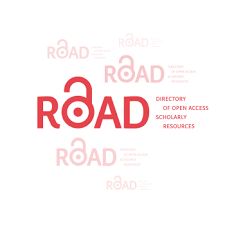Editor in Chief
- Boisandi Boisandi, IKIP PGRI Pontianak, Indonesia
Editorial Board Members
- eka trisianawati, IKIP PGRI Pontianak, Indonesia
- Ira Nofita Sari, IKIP PGRI Pontianak, Indonesia
- matsun matsun, IKIP PGRI Pontianak, Indonesia
- Eti Sukadi, IKIP PGRI Pontianak, Indonesia
- Dwi Fajar Saputri, IKIP PGRI Pontianak, Indonesia
- Toni Kus Indratno, Universitas Ahmad Dahlan, Indonesia
Reviewers
- Dwi Setyawan, Universitas Muhammadiyah Malang, Indonesia
- Yudi Kurniawan, STKIP Singkawang, Indonesia
- raehanah raehanah, UIN MATARAM, Indonesia
- riski muliyani, STKIP Singkawang, Indonesia
Peer Review Process
Peer Review Process is a process where the journal assesses the quality of manuscripts before publication, reviewed by relevant experts in the field to review and comment on accepted manuscripts. This process aims to help the editor determine whether the manuscript should be published in a science and technology education journal.
Important points in the Peer Review Process:
- Manuscripts sent to journals first undergo initial screening by the editorial team.
- Manuscripts that pass the examination will be sent to a minimum of two peer reviewers for review.
- Peer reviewers independently make recommendations to the journal editor as to whether the manuscript should be rejected or accepted (with or without revisions).
- The journal editor considers all feedback from peer reviewers and makes a decision to accept or reject the manuscript.
The Peer Review Process for journal publications is basically a quality control mechanism, where experts evaluate manuscripts with the aim of ensuring the quality of the published manuscripts. However, peer reviewers do not make decisions to accept or reject papers, but provide decision recommendations. In journals, decision-making authority rests only with the journal editor or journal editorial board.
How Peer Review works
When a manuscript is submitted to a journal, it is assessed to see whether it meets the criteria for submission. If so, the editorial team will select potential peer reviewers in the research field to peer review the manuscript and make recommendations. There are four types of peer review used by JPSA:
• Single-blind: reviewers know the authors' names, but authors do not know who reviewed their manuscript unless the reviewers choose to sign their report.
• Double-blind: the reviewer does not know the author's name, and the author does not know who reviewed the manuscript.
• Open peer: the author knows who the reviewer is, and the reviewer knows who the author is. If the manuscript is accepted, a named reviewer's report is published alongside the article.• Transparent: reviewers know the names of authors, but authors do not know who reviewed their manuscript unless the reviewer chooses to sign their report. If the manuscript is accepted, an anonymous reviewer's report is published alongside the article.Why peer review?Peer review is an integral part of scientific publishing that confirms the validity of the manuscript. Peer reviewers are experts who donate their time to help improve the manuscripts they review.
Peer review step
1. Paper SubmissionThe author sent the manuscript to the JPSA journal. This is usually through an online system on the JPSA journal page or the journal can accept submissions via the author's email.
2. Editorial Team AssessmentThe editorial team checks the manuscript to ensure it complies with the journal template. The quality of the manuscript is not assessed at this time.
3. Assessment by the Editor-in-ChiefThe editor-in-chief checks that the manuscript is appropriate for the journal, sufficiently original, and interesting. Otherwise, the paper may be rejected without further review.
4. Invitation of Peer ReviewersThe editor sends invitations to individuals who are appropriate reviewers.
5. Response to InvitationPotential reviewers weigh such invitations in the light of their own expertise, conflicts of interest, and availability. They then accept or reject it. When possible when rejecting, they suggest alternative reviewers.
6. Review ConductedReviewers set aside time to read a manuscript several times to form an initial impression of a manuscript and take notes for a detailed point-by-point review. The review is then submitted to the journal, with a recommendation to accept or reject it or with a request for revision before reconsideration.
7. Journal Evaluates ReviewsEditors consider all returned reviews before making an overall decision. If reviews differ greatly, the editor may invite additional reviewers to obtain additional opinions before making a decision.
8. Decisions are CommunicatedThe editor sends a decision email to the author including relevant reviewer comments.
9. Next StepsIf accepted, the script is sent to production. If it is rejected or sent back, the author is asked to revise it with comments from the reviewers to help the author improve the manuscript. At this stage, the reviewer is also sent an email to notify the author of the results of the revision. If the manuscript is revised again, the reviewer expects a new version of the manuscript. However, if only minor changes are requested, then the review is carried out by the editor.







